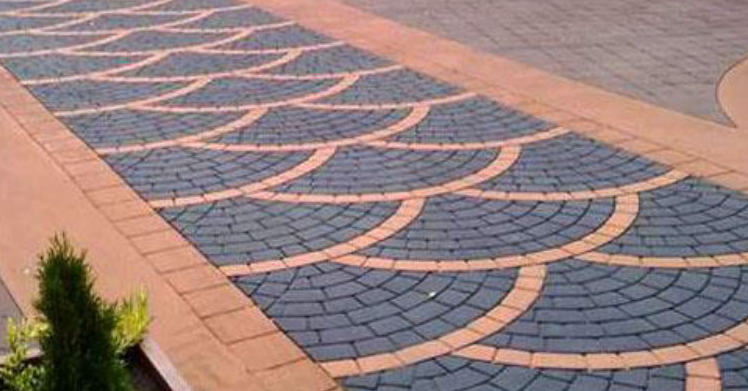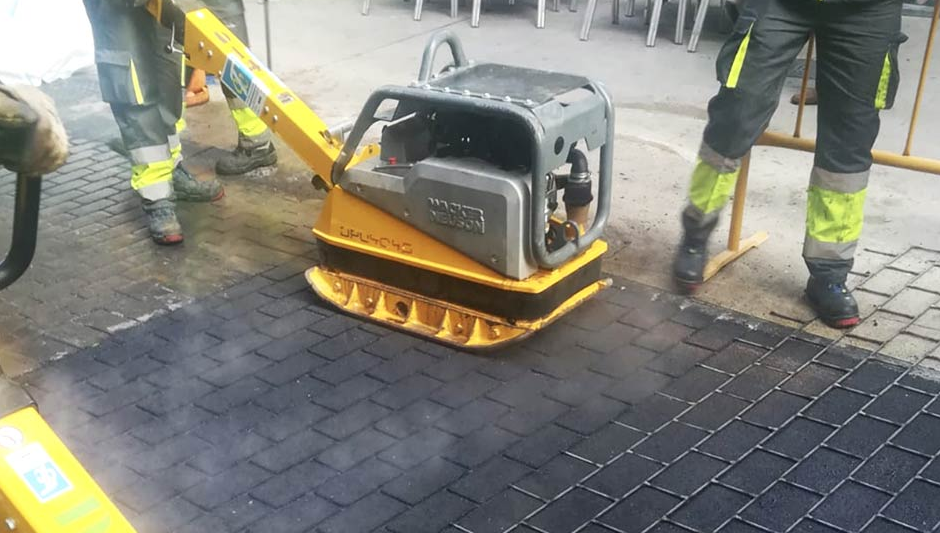Stamped asphalt is an innovative and aesthetically pleasing pavement solution that combines the durability of traditional asphalt with the decorative appeal of various patterns and textures. This technique allows for the creation of visually attractive surfaces suitable for a variety of applications, from driveways and walkways to commercial areas and public spaces. In this article, we will explore what stamped asphalt is, how it is applied, its benefits, and why it is becoming a popular choice for both residential and commercial paving projects.

What Is Stamped Asphalt?
Stamped asphalt is a decorative paving technique that involves imprinting patterns or textures onto a freshly laid layer of asphalt. The process typically takes place after the asphalt has been poured and is still in a hot, malleable state. Using specialized stamping tools, contractors press patterns into the surface of the asphalt, creating a textured or patterned finish.
This technique can replicate the look of other materials like brick, stone, slate, or tile, offering a wide range of design options. The patterns are often enhanced with color additives or sealers, making the finished surface both visually appealing and functional.
How Is Stamped Asphalt Applied?
- Preparation
- The area to be paved is first prepared by clearing the site of debris, weeds, and any existing pavement. Proper drainage and a solid base are also essential for ensuring the longevity and performance of the asphalt.
- Asphalt Installation
- Once the site is prepared, a layer of hot asphalt is laid down and leveled. This layer should be thick enough to allow for the imprinting of patterns while ensuring durability.
- Stamping Process
- While the asphalt is still hot and workable, large stamping mats, made of rubber or polyurethane, are pressed onto the surface to imprint the desired pattern. The mats are often used in combination with hand tools to ensure that the pattern is evenly distributed and aligns with the project’s design.
- Coloring and Sealing
- After the stamping is completed, color hardeners or liquid pigments are applied to the surface to enhance the appearance. These additives can replicate the look of natural stone or brick. A protective sealant is also applied to ensure the longevity and resistance of the stamped asphalt to weathering, stains, and wear.
- Curing and Drying
- Finally, the asphalt is allowed to cure, which can take several hours to a day, depending on the environmental conditions. Once cured, the surface is ready for use.
Benefits of Stamped Asphalt

- Aesthetic Appeal
- One of the primary reasons people choose stamped asphalt is its ability to enhance the appearance of a pavement surface. Stamped asphalt offers a variety of design possibilities, from traditional cobblestones to contemporary patterns like herringbone or basketweave. It can be customized to complement the surrounding environment, creating a more visually appealing space.
- Cost-Effective Alternative
- Stamped asphalt offers the look of high-end materials like stone or brick at a fraction of the cost. Traditional paving options like brick or stone can be expensive to install and maintain, whereas stamped asphalt provides a similar aesthetic at a more affordable price point.
- Durability and Strength
- Like regular asphalt, stamped asphalt is durable and able to withstand the rigors of traffic, weather conditions, and heavy loads. When applied properly, stamped asphalt can last for many years, making it a practical option for high-traffic areas.
- Low Maintenance
- Stamped asphalt requires less maintenance compared to other decorative paving materials like concrete or natural stone. Regular cleaning and occasional resealing are typically all that is needed to keep the surface looking its best.
- Flexibility in Design
- One of the major advantages of stamped asphalt is the flexibility it offers in design. Contractors can create patterns and textures that mimic the look of various materials, allowing homeowners and businesses to achieve a customized aesthetic without the associated high cost.
- Quick Installation
- Stamped asphalt can often be installed more quickly than other decorative paving materials, such as stamped concrete or pavers. The asphalt is poured and stamped in one process, reducing labor costs and the time required to complete the job.
- Environmental Benefits
- Asphalt is a recyclable material, and the use of stamped asphalt can contribute to sustainability efforts in the construction industry. By repurposing old asphalt or using eco-friendly sealants and additives, contractors can reduce the environmental impact of the project.
Applications of Stamped Asphalt
- Driveways
- Stamped asphalt is a popular choice for residential driveways. It enhances curb appeal while providing a smooth, durable surface that can withstand the weight of vehicles. Homeowners can choose from a wide range of patterns and colors to match their home’s exterior style.
- Walkways and Pathways
- Stamped asphalt is also ideal for walkways, garden paths, and other pedestrian areas. Its versatility allows for creative designs that can mimic natural materials like stone, creating a beautiful path through gardens or landscapes.
- Commercial and Public Spaces
- Many commercial properties, parks, and public spaces use stamped asphalt for pedestrian areas, plazas, and parking lots. It provides a decorative finish that enhances the space while maintaining the durability needed for high traffic.
- Patios and Outdoor Areas
- For patios and outdoor entertainment areas, stamped asphalt is an excellent option. It can be customized to fit a variety of design themes, from rustic cobblestone to contemporary tile patterns. Its slip-resistant surface is particularly beneficial in outdoor spaces.
- Retail and Commercial Parking Lots
- Retail stores and shopping centers often use stamped asphalt in parking lots to create a unique, aesthetically pleasing environment. The stamped patterns can be used in pedestrian walkways or sections of the lot to enhance the customer experience.
Comparison: Stamped Asphalt vs. Other Decorative Pavements
| Feature | Stamped Asphalt | Stamped Concrete | Pavers |
|---|---|---|---|
| Cost | Lower cost than other decorative options | Higher cost due to material and labor expenses | Higher cost due to labor-intensive installation |
| Durability | Highly durable and resistant to wear and cracking | Durable but prone to cracking over time | Highly durable but can shift or become uneven |
| Maintenance | Low maintenance, periodic sealing required | Requires more maintenance, especially with cracks | Requires maintenance for jointing material |
| Design Flexibility | Offers a wide range of patterns and textures | Offers a wide range of patterns and textures | Limited to the types and colors of available pavers |
| Installation Time | Faster installation process | Longer installation time due to detailed work | Time-consuming, requiring precise fitting of each paver |
Challenges of Stamped Asphalt
While stamped asphalt offers many advantages, there are a few considerations to keep in mind:
- Weather Sensitivity
- Since the stamping process relies on hot asphalt, it must be done under favorable weather conditions. Extreme heat or cold can affect the quality of the imprint and the curing process.
- Risk of Damage
- Although stamped asphalt is durable, it can still be damaged by heavy loads, improper installation, or harsh weather conditions over time. Regular maintenance is needed to preserve its appearance.
- Limited Color Range
- While color additives can be used, stamped asphalt may have a more limited color range compared to other materials like concrete or pavers.
- Professional Installation Required
- Proper installation of stamped asphalt requires skill and experience to ensure that the patterns are applied correctly and that the surface is properly sealed. It is essential to hire a professional contractor for best results.
Stamped asphalt offers an attractive, cost-effective, and durable solution for creating aesthetically pleasing pavement surfaces. Whether used for driveways, walkways, patios, or commercial spaces, stamped asphalt provides a versatile and customizable finish that can mimic high-end materials without the associated costs. Its low maintenance, fast installation, and long-lasting durability make it an excellent choice for both residential and commercial projects. With its wide range of design options and environmentally friendly qualities, stamped asphalt is poised to remain a popular choice in the world of decorative paving.






